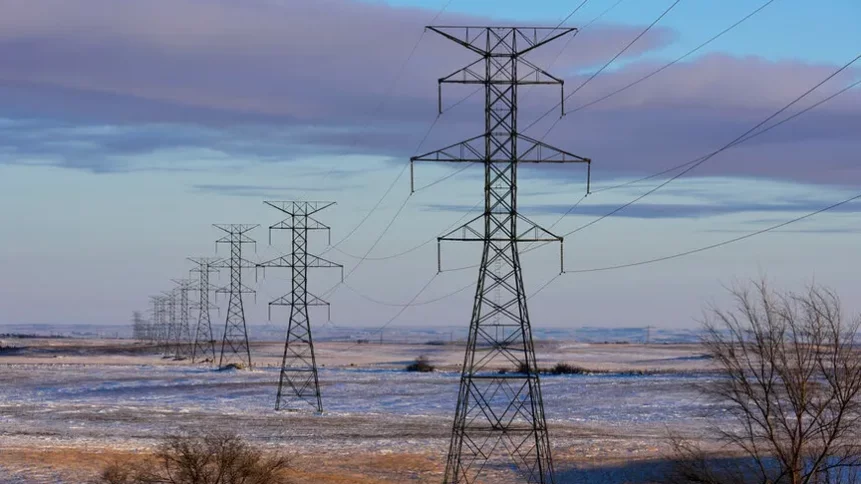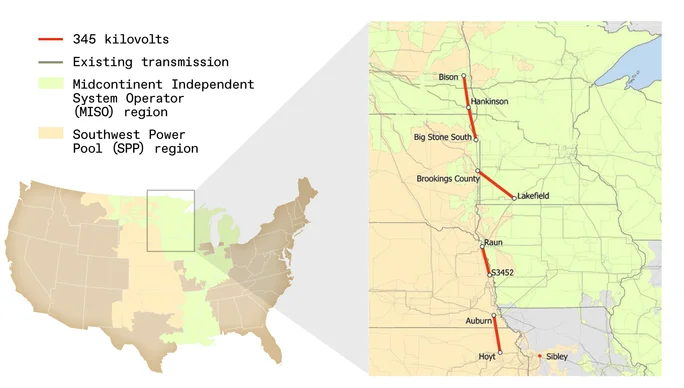Connectivity cuts profits for utilities corporations

• Technically, the US has a shortage of transmission lines.
• Interregional transmission lines would help provision – but potentially hit utility profits.
• Power Vs. profit – the ultimate American standoff…
Without the power grid, there would be nothing. Or at least nothing for us to write about, and nothing to write it on; the human condition has become reliant on electricity for more or less everything. So, the system that provides it and ensures it gets across the country, must be well-planned and beneficial to as many people as possible. Right?
That depends on where you are: there aren’t enough transmission lines in the US to connect regional power networks, driving up the cost of electricity, reducing grid reliability and hampering the deployment of renewable energy.
High voltage transmission lines are what move large amounts of energy across long distances, linking power generation to power consumption. If done right, the transmission network contains a web of connections that create a reliable, redundant power supply system of huge scale.
Electricity makes money for utility companies who, being good capitalists with shareholders to satisfy, want to keep hold of as much of it as possible. That means they refuse to pursue (potentially expensive) interregional transmission projects and go as far as actively impeding them, because new projects threaten their profits and disrupt industry alliances.
Utility companies are lobbying against reforms that would lose them money: addressing transmission shortages has long been on the agenda in Washington, but utility firm lobbying continue to ensure delays.
As things currently stand, around 40 corporations own the vast majority of transmission lines in America. Their hold on the backbone of US grids should be scrutinized.
With more transmission lines comes more capacity and connectivity, letting new power plants connect and more power to move between transmission networks. Utility companies don’t want that kind of competition, or for their allies to lose regional control – and so transmission expansion is something they oppose.
The existing transmission networks across America were built largely during the last century by for-profit companies. Nonprofit utility providers organized by governments and communities had some part in it too – but by comparison, a very minor one.
The geographical equations of transmission lines
It makes sense that transmission lines tend to be concentrated around fossil fuel reserves and population centers, but there’s another force at play, deciding where the lines are routed: historic utilities alliances.
Where agreements were made between companies to trade energy, sufficient transmission was built that would allow power to move between their local service territories. Over time, alliances have expanded but there are still non-allied utility companies with comparatively very weak connections.
Expansion opens opportunities for new power plant and transmission developers to undercut profits, taking control over the rules shaping the industry. The value of linking networks is widely accepted around the world – but it doesn’t make money for the American companies currently in control of the grid.
Connecting regional networks is critical to the incorporation of renewable energy. For example, four proposed high voltage lines totaling 600km along the seam of regional networks in the upper Midwest would connect at least 28 gigawatts of wind and solar energy. Although the plans have been around for years, utility companies in neighboring regions haven’t moved forward.

Proposed new transmission lines in the upper Midwest. Via Joint Targeted Interconnection Queue Study (JTIQ), MISO, SPP.
We might learn from the European Commission which in 2018 set a target that each member country would transmit across its borders at least 15% of the electricity produced in its territories. By the end of 2022, 23 gigawatts of cross-border connections in Europe were under construction or in advanced stages of permitting; it’s unlikely those losing profit over the changes were totally on board, but the change has gone ahead all the same.
In the US, building the line across the Midwest would cost $1.9bn, which is a staggering number – until you compare it with the cost of rebuilding aged transmission infrastructure every year.
Not only that, but interregional transmission for renewable energies also significantly reduces the cost of use for consumers. Even if renewables aren’t considered, costs would be massively reduced given that better integrated networks reduce the amount of generation capacity needed and decrease energy market cost. Reliability goes up, too.
What limited interregional connection there was proved paramount in preventing total disaster when Storm Elliott disabled power plants and pipelines from Dakota to Georgia in 2022. Imagine a reality in which localized disruption didn’t mean blackouts for entire states.
Won’t someone think of the profits?!
That isn’t how utilities companies see it, of course. For them, it means a whole bunch of drawbacks. More connections open the door for competitors who might undercut them on price; with profits in mind, having a monopoly is the more efficient choice, but interregional lines threaten utilities’ dominance over the nation’s power supply.
Also, building a whole new power plant in one area generates more money than just building transmission lines from an existing one. Transmission projects also mean competing against other developers for profit from that construction.
There’s some hope in the BIG WIRES Act introduced BIG WIRES Act introduced in September by Senator John Hickenlooper and Representative Scott Peters. The acronym, that’s so handily pertinent to the cause, stands for Building Integrated Grids With Inter-Regional Energy Supply. [Do you ever get the feeling politicians sometimes find the acronym first and work backwards? – Ed]
Hard not to see a case for nationalizing the power grid, but we won’t spell it out. Climate emergency and all, best to keep an eye on the electricity companies though, eh?








